The Ara Romana of Villers-sur-Semois: pagan stone under a Christian altar.
The Saint-Martin church of Villers
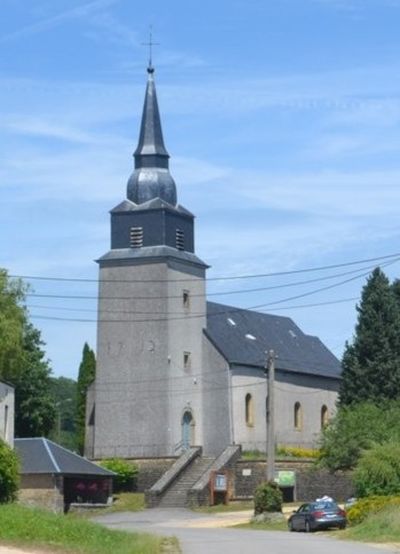
Tradition has held that the church of Villers is one of the early churches in the region.
Villers-sur-Semois is itself a village of very ancient origin.
Many debris which are frequently encountered in the ground recall the Roman occupation there.
The name of the village "Villers" comes from the word "villa" which designated a Roman farm after the 4th century.
It is probable that around this villa formed groups of dwellings and tiny hamlets.
It was also near Etalle (Stabulum), relay of the consular route which led from Reims to Trier and which was used for the continual peregrinations of legionaries, merchants and settlers.
Although the church building in its present form dates from the 16th century and the tower bears the vintage 1712, most historians postulate that a first chapel was erected in this nascent village, probably around the time when the first evangelizers of the Gauls converted the "pagans" to the cult of the "true" god.
The frequently presented hypothesis is that it dates from the time of Saint Walfroy (565 - 600).
This "rural" church, located near the meadows and not in the center of the village, took on great importance from the second millennium.
In the 16th century, the initial chapel was transformed into a larger church.
Well preserved, the decorations of the vaults and arcades are remarkable and typical of the time of Charles V.
The parish served eight villages and its importance has meant that over the centuries its church has accumulated a large number of valuable items: furniture, paintings, liturgical objects, ...
The 1712 tower was erected by the lord of Villers, Henri Henriquez.
The building remains today a jewel of the Romanesque heritage.
Under the altar table : a Roman stone.
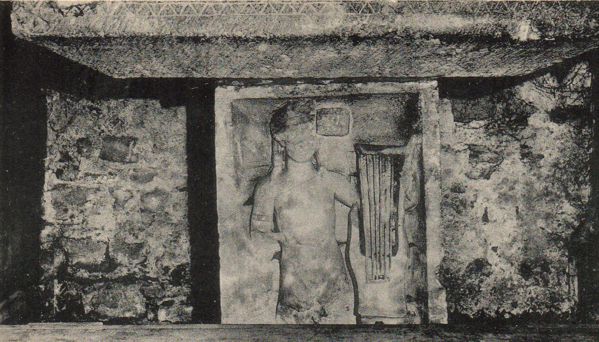
The brochures and websites describing this church all mention an "ara romana", a Roman stone with four gods which forms the base of the high altar.
It is probably towards this stone that the visitor will therefore approach in the first place.
But what is this famous stone?
An "Ara Romana" ?
The high altar table, a 7th century slab, 1.80 m long, rests on a cubic Roman stone 0.80 m high and 0.70 m wide.
The four sides of this stone are carved in high relief with the effigy of Roman gods.
The statues are however broken at the origin of the legs and we can deduce that, in proportion to the visible part of the bodies, the stone could originally have a height of about 1.50 m.
Roman deities can be recognized by their attributes.
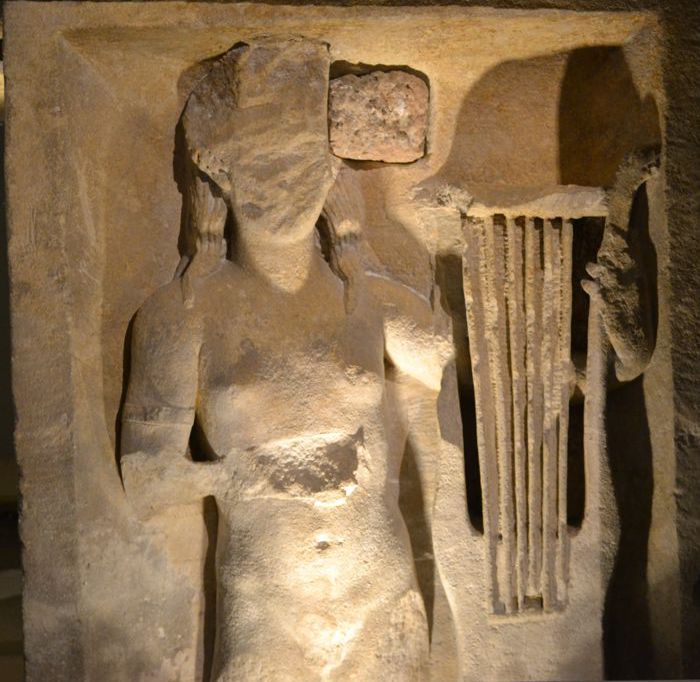
Towards the front, facing the assembly, is Apollo, Greek and Roman god of the arts, and mainly of music and poetry as well as medicine.
Its attributes are the lyre, the bow and arrows, and the laurel.
In Villers, he holds a lyre in his left hand, his main attribute.
Interesting detail, this lyre has 6 strings and is inspired by Celtic representations, the lyre of Apollo, according to legend had 7.
Her straight hair falls to her shoulders, her face is rounded from mutilation, other parts of the body are also damaged, her right hand is removed.

On the right side, Diana, Roman goddess of hunting and forests, identified with the goddess Artemis in Greek mythology.
She holds a bow in her right hand.
She is draped in the Greek style and her head appears diademed with a partly broken crescent, which would justify her quality of lunar deity (indeed, in mythology, Diana is The Moon).
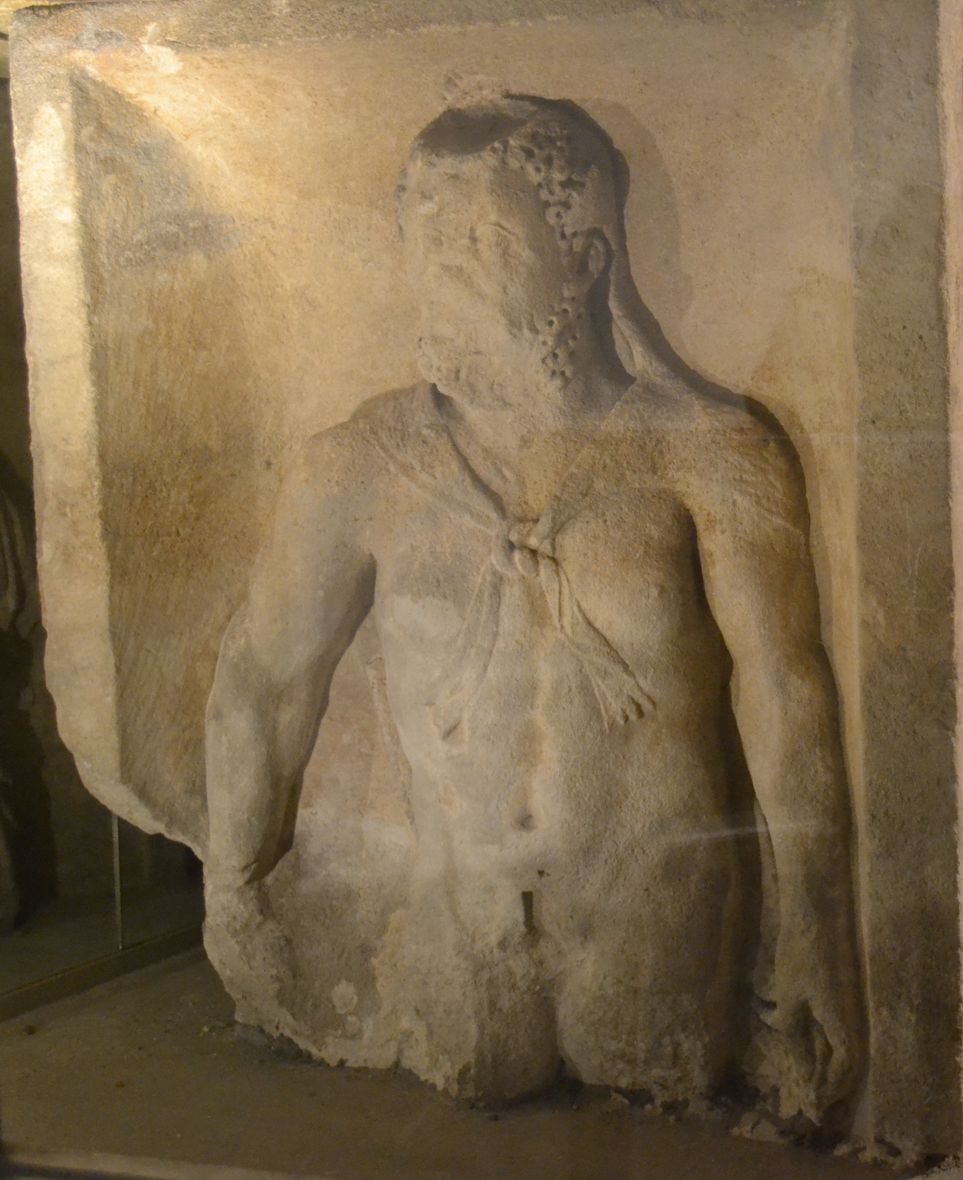
On the left side is Hercules, equivalent of the Greek hero Heracles.
He is standing, capped and covered from the shoulders by the skin of the Nemean lion, whose tail he holds between the thumb and forefinger of the left hand.
As the mythology represents it, he has the beard and the frizzy hair and the muscularity of the body very developed.
Recall that Hercules is the son of Zeus and Alcmene, a mortal, and as such he is considered only as a demigod.
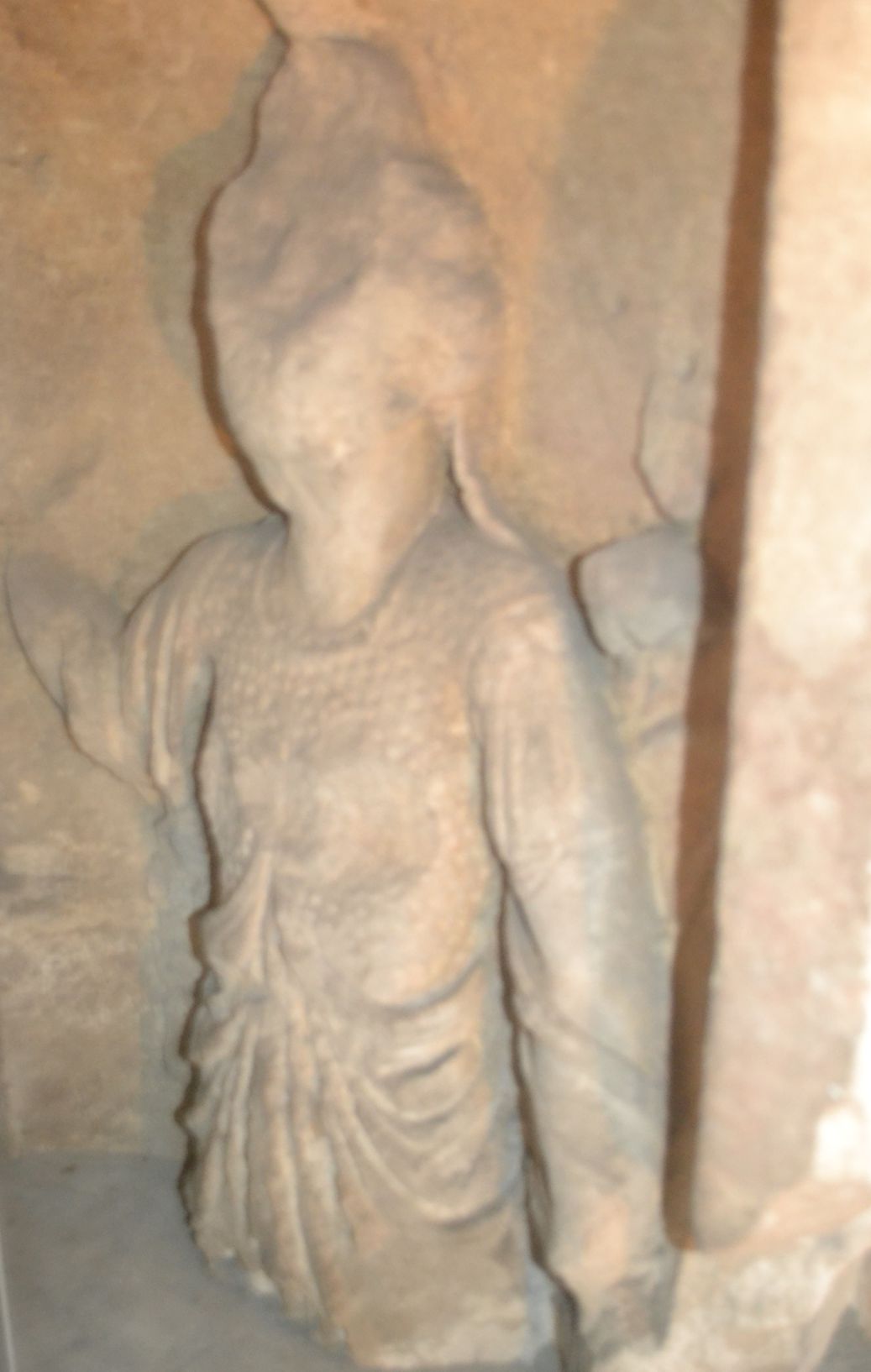
Behind the altar is Minerva, Roman equivalent of Athena, goddess of war and war strategy, but also of the arts, thought and industry.
In Villers, this part of the stone is very close to the wall of the chancel of the church and it is very difficult to visualize and to photograph the goddess.
She has the helmet, the breastplate, and we can guess above the left shoulder her main attribute, the owl.
Are this stone and its high reliefs a Roman "ara"?
The Latin word "ara" can be translated as "sacrifice altar".
Was the site of a pagan altar chosen to build the first Christian oratory?
Historians inform us in fact that the first evangelizers of Gaul most often chose the places where the "false" gods were worshiped to establish the cult of the new religion, and, after having overturned the pagan altars, they built on their ruins, an altar to the "true" God.
This would be the case of the famous ara lunae or "altar of the moon" of Arlon.
Evangelizers then substituted for the pagan idol the patron saint who had the most affinity with it.
It was thus a wish of Pope Gregory the Great at the end of the 6th century:
"the temples must not be destroyed, but only the idols which are there, because if the buildings are well constructed, they must be made to pass from the worship of the idols to the service of the true God, so that this people, seeing that one does not bring down his temples, to be converted more easily, and that after having confessed the true God, he assembles more willingly to worship him in the places he already knows.".
What about that of Villers?
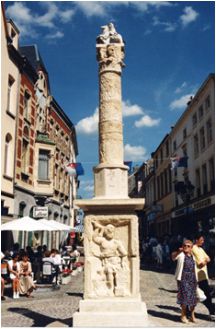
Obviously, the stone comes from a larger monument, which was halved in height to superimpose the Christian altar on it.
In all likelihood, it comes from a "column of Jupiter", a monument raised to the glory of the celestial god Jupiter and inspired by a model created in Mainz in honor of Nero.
It is generally associated with a coronation which depicts a rider killing an "anguipede", a half-human, half-snake monster, which is why such a monument is also called "column of the rider with the anguiped".
This is the reconstruction of such a column which is located in the Grand'Rue in Arlon and whose top of the base is quite similar to the stone of Villers.
Where did this monument come from, the plinth of which was reused?
Probably not from Villers-sur-Semois, but from a larger village, perhaps from Etalle?
However, this hypothesis does not invalidate the early use of the stone thus reused as a pagan altar in Villers, prior to the construction of the Christian church.
Or, the stone was transported from Etalle to Villers during the construction of the church.
It does not matter: this stone, very well preserved, is one of the ancient curiosities of the region.
Moreover, it is its good state of conservation that makes it special, because the use of a Roman stone as a Christian altar base is far from unique in the region.
Statistics from the beginning of the 20th century established a non-exhaustive list of 21 four-god bases from columns of Jupiter, discovered in Belgium, including 7 in Arlon, 1 in Wolkrange, 2 in Messancy, 1 in Mageroux, 3 in Virton, 1 in Ethe, 1 in Latour, 1 in Villers-sur-Semois, 1 in Mussy-la-Ville, 2 in Amberloup and 1 in Berg.
And we can cite several similar stones in the Grand Duchy of Luxembourg and Alsace.
Why then did the early Christians place these stone blocks under altars?
Several hypotheses can be put forward.
- A site relation: the Christian sanctuary would have been superimposed on a pagan place of worship.
- A neighborly relationship: the stones are said to have come from a monument of an important Roman site in the surrounding villages and it was considered useful to display them to preserve the memory of this flourishing time.
- A magical-religious cause: the sheltering of an ancient stone in a religious monument would make it possible to counter possible occult forces by subjecting them to the authority of the Church.
- A purely aesthetic choice: the builders of the churches were struck by the beauty of the ancient remains and no one wanted to destroy them.
- A Christian reinterpretation of the deities depicted on the blocks: the sculptures could have been taken for ancient witnesses of Christian worship, such as Hercules who would be confused with Saint Remy or Saint Anthony.
Regarding the stone of Villers, the opinions of historians are divided.
Some do not attribute any relation between the pagan stone and the prescriptions of Christian worship.
Others are convinced that the presence of such a stone corresponds to the ordinance of Pope Saint Felix which prescribed to erect the altars above the tomb of a martyr and thus that the mortal remains of the saint were placed immediately under the 'altar.
If, by exception, there was no tomb in the place where we wanted to build a church, we would look for the relics in the sacred cemeteries to place them under the altar.
And this may be the case in Villers!
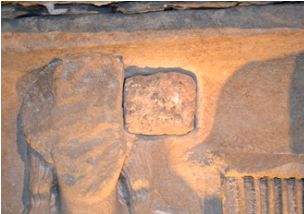
So, by examining closely the face of Apollo turned towards the church, one can notice beside the head of the god a place where there was a hiding place, closed by means of a square stone.
Inside the hole, Mr. Sibenaler, curator of the Arlon Archaeological Museum at the beginning of the 20th century, indeed found a lead box with bones, which he attributed to a saint, probably, according to him, the remains of Saint Martin, patron of the church of Villers-sur-Semois.
Later, scientific analyzes carried out in Groningen, Holland, however, formally showed that the bone attributed to Saint Martin was in fact that of a pig.
It is therefore a false relic, but which nevertheless dates from the Iron Age, between 740 and 370 BC.
Who hid it there? It remains a mystery ...